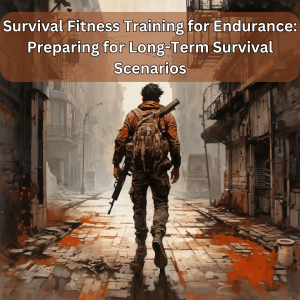In times of crisis or disaster, communication plays a vital role in ensuring the safety and well-being of individuals and communities. When traditional means of communication, such as cell phones and the internet, become unreliable or fail altogether, having alternative methods of communication becomes essential. This is where ham radio, also known as amateur radio, shines as a reliable and versatile tool for emergency communications. In this prepper’s guide, we will explore the basics of ham radio, commonly used frequencies, and radio protocols to help you stay connected when it matters most.

Prepper’s Guide to Emergency Communications and Ham Radio
Understanding Ham Radio:
Ham radio refers to the use of radio frequencies for non-commercial purposes by licensed operators. It is a global community of enthusiasts who communicate with each other locally, nationally, and even internationally using a wide range of radio technologies. During emergencies, ham radio operators can establish communication networks, share critical information, and coordinate relief efforts when other means of communication are compromised.
Licensing:
Before operating a ham radio, it is essential to obtain the appropriate license. Licensing requirements vary from country to country but generally involve passing a written examination that tests knowledge of regulations, operating procedures, and basic technical concepts. Obtaining a license ensures that operators understand the rules and have the necessary knowledge to use ham radio equipment safely and effectively.
More information on obtaining your license (in the USA) can be found at The FCC website HERE
Commonly Used Frequencies:
Ham radio operators have access to a wide range of frequencies across different radio bands. During emergencies, certain frequencies and bands are commonly used for specific purposes. Here are some of the most frequently utilized frequencies:
- 2-Meter Band: This band, also known as the VHF band, operates around 144-148 MHz. It is popular for local and regional communications, making it ideal for coordinating with nearby preppers, emergency services, and community organizations.
- 70-Centimeter Band: Another VHF band, operating around 430-450 MHz, this frequency range offers relatively short-range communication but with improved penetration through buildings and obstacles. It is widely used for local communication and can be helpful in urban or suburban environments.
- High-Frequency (HF) Bands: HF bands, including 80, 40, 20, and 15 meters, provide long-range communication capabilities. They are well-suited for communicating over hundreds or even thousands of miles, making them valuable for reaching out to distant areas or coordinating with emergency response organizations across regions.
Ham Radio Protocols:
Effective communication requires adherence to certain protocols and practices to ensure clear and efficient transmission. Here are some essential radio protocols to follow:
- Q Codes: Q codes are three-letter codes that ham radio operators use to abbreviate commonly used phrases. For example, “QSY” means “change frequency,” “QTH” refers to “location,” and “QRG” stands for “frequency.” Familiarize yourself with common Q codes to facilitate quick and concise communication.
- Identify Yourself: Begin transmissions by stating your call sign clearly. This unique identifier lets other operators know who they are communicating with and ensures compliance with regulations.
- Listen First: Before transmitting, listen to ongoing communications to avoid interrupting important exchanges. Monitoring the frequency helps you gain situational awareness and ensures your message doesn’t interfere with existing conversations.
- Speak Clearly and Concisely: When transmitting, articulate your message clearly, using proper voice modulation. Keep transmissions brief and to the point to ensure efficient use of limited radio resources.
- Repeat Important Information: To ensure accuracy, repeat critical details such as addresses, numbers, or instructions. This redundancy minimizes the chance of miscommunication or misunderstanding.
- Emergency Communications: During emergencies, it’s crucial to prioritize and give way to emergency traffic. Emergency communications often follow specific protocols and may involve passing traffic through designated nets or frequencies. Stay updated with local emergency communication plans and guidelines to effectively participate in relief efforts.
Having reliable communication during emergencies is essential for personal safety and effective response. Ham radio provides a robust and versatile means of communication when traditional systems fail. By obtaining the necessary license, familiarizing yourself with commonly used frequencies, and following established radio protocols, you can become a valuable asset in emergency situations. Remember, practice is key. Regularly engage in radio exercises, connect with local amateur radio groups, and stay informed about evolving technologies to enhance your emergency communication capabilities.





